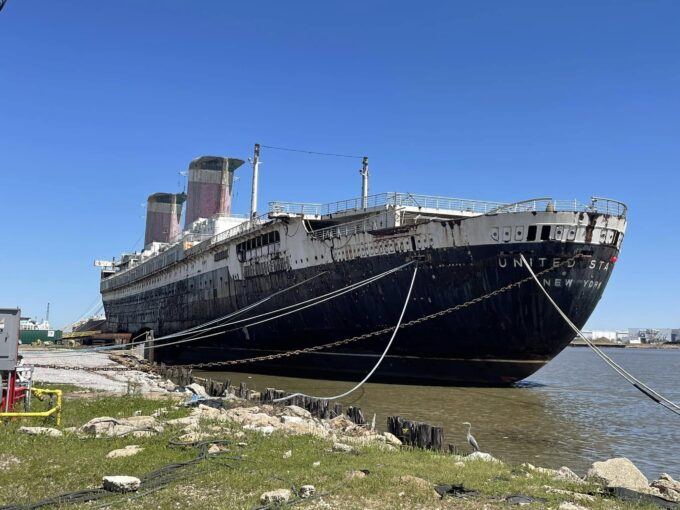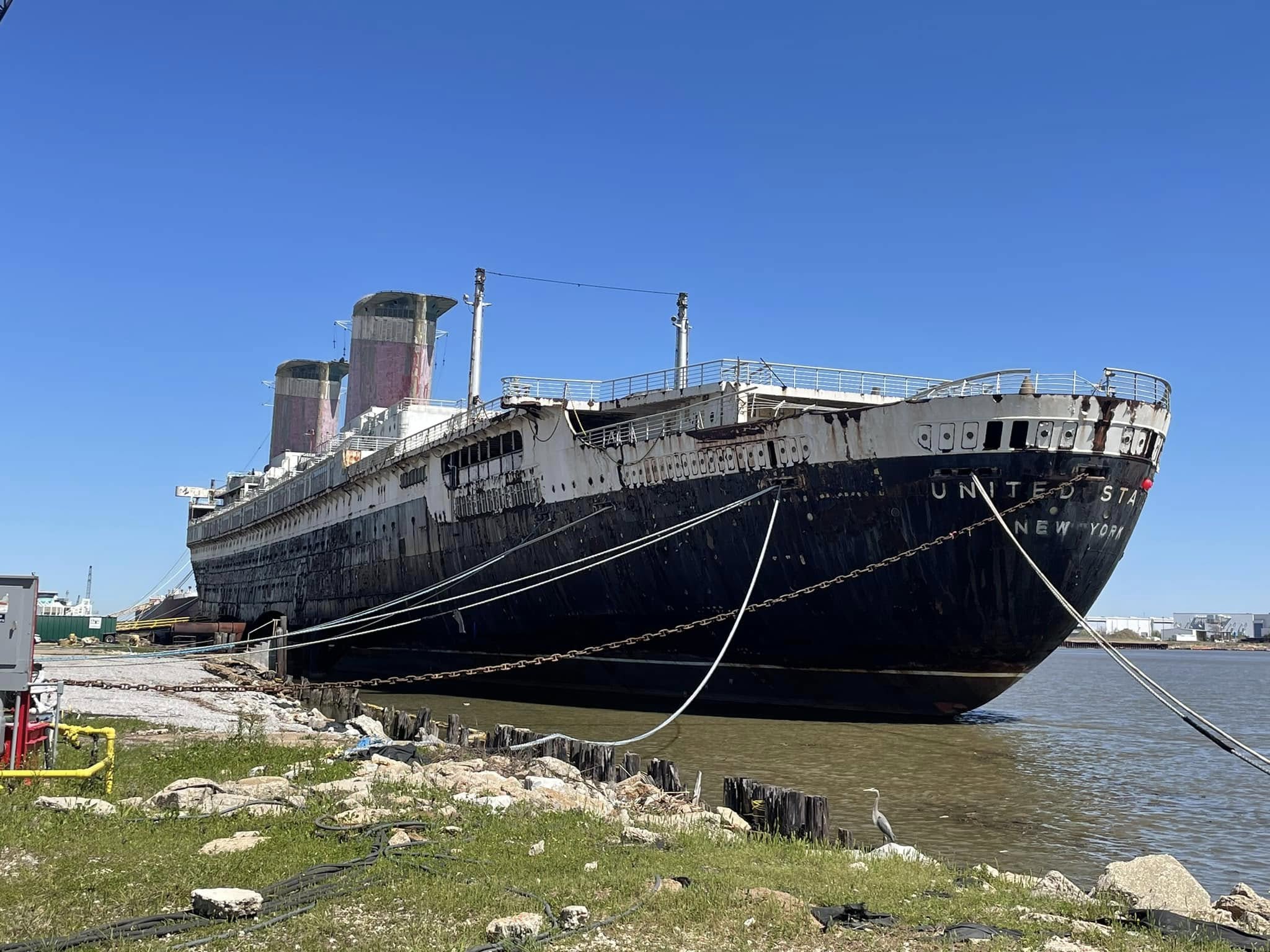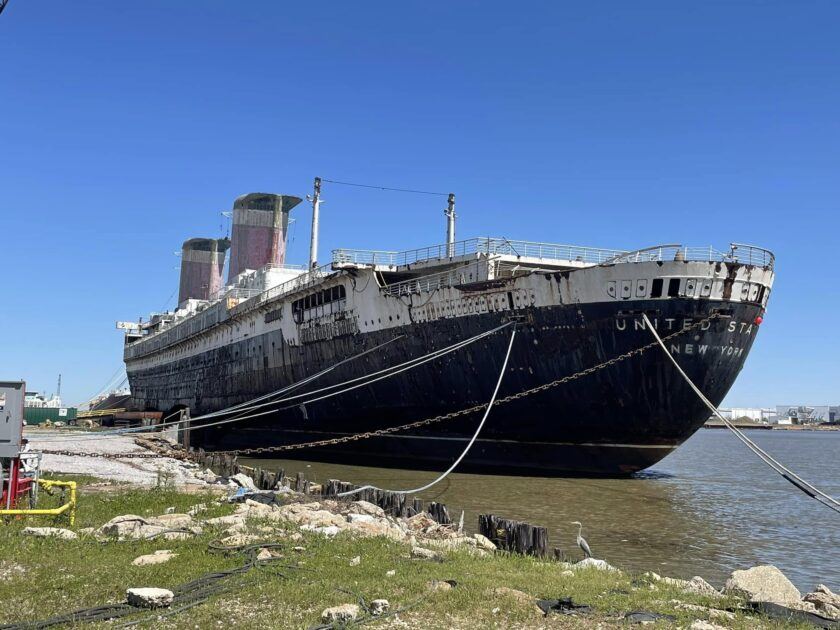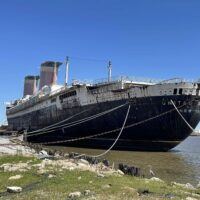
Photograph Source: Brian.S.W – CC BY-SA 4.0
A few months apart, Marketplace and All Things Considered did stories about the luxury liner, the USS United States. Both stories were upbeat and treated the 75-year-old ship like a venerable friend. (The ATC report gushed: marvel, stately, storied and glamorous.) How could they not ask the question of how the ship’s owners got rid of hundreds of tons of asbestos? You don’t need to be a mechanical engineer or an expert in shipbuilding to know that in 1950, when it was built, almost all industries used asbestos – it was ubiquitous.
It ended up in Crimea. I saw the ship being towed up the Bosphorus from Istanbul’s Tuzla shipyard in the early 1990s. Greenpeace had chased it away.
With the help of a good editor either one of these reporters could have written a career-changing exposé. One revelation which came to me in writing this piece is this symbiotic relationship between a free press and environmental activism; when Greenpeace did that banner drop in the Istanbul shipyard, the free press in Turkey finished the job. What do you think the ship’s owners thought when the story broke? “Where is a nearby shipyard located in a place with no free press – ergo, no (or ineffectual) environmental activists?”
Nobody wants to overthink a “feel good” report in times like these, but there was (and still is) real journalism work to be done here, work that may change hundreds of lives by seeking justice for the victims and their families.
Let us do a thought experiment. How to operate as a human rights activist in a country with small, inexperienced and repressed NGOs, and no tradition of investigative journalism? That’s the situation I found myself in while working in Indonesia in the late-1980s. One day a thick report hit my desk. It was a study done with 200 female factory workers as subjects that showed that 88% were anemic! The study was carried out by the International Labor Organization (the U.N.’s oldest agency -founded in 1919 under the League of Nations). The team of 10 Indonesian doctors tracked the women for two years with overall direction done by an American physician from the CDC in Atlanta. If you know anything about me you can guess the rest – I went around Jakarta for weeks beating people over the head with that report. It paid off months later when my little office got our first-ever Human Rights grant from the U.S. Agency for International Development.
Now I am (finally) going to tie this digression to the Crimea case: it turns out that criminally careless removal and disposal of the ships asbestos had been well- documented in an investigation by the Organization for Cooperation and Security in Europe (OSCE), carried out in 2010-2011. The investigation found 380 tons of asbestos discarded haphazardly around the shipyard.
My main point is that we need to “weaponize research” which is sometimes carried out in the most closed and repressive countries.
As I said in the opening, much work still needs to be done on this particular case; workers almost certainly contracted mesothelioma and asbestosis, either while working or living near the shipyard. Also, we need to sort out the frequent changes of ownership. Who was responsible for taking that ship to Sevastopol?
There was one Ukrainian journalist who tried to get the word out. Tatyana Rikhtun assisted the OSCE researchers with photographic evidence of the leaking barrels and falling-down sheds full of asbestos (page 14 of report). She re-located to Kyiv: “I left Crimea not on my own will, because after a third attack on me I was not sure I’d survive a fourth attempt,” she told the Committee to Protect Journalists in 2015, a year after the “little green men” asserted control of the peninsula.
The post Got Editors? How All Things Considered and Marketplace Whiffed on the Same Story appeared first on CounterPunch.org.



